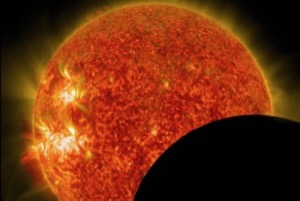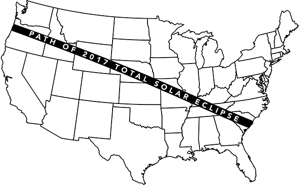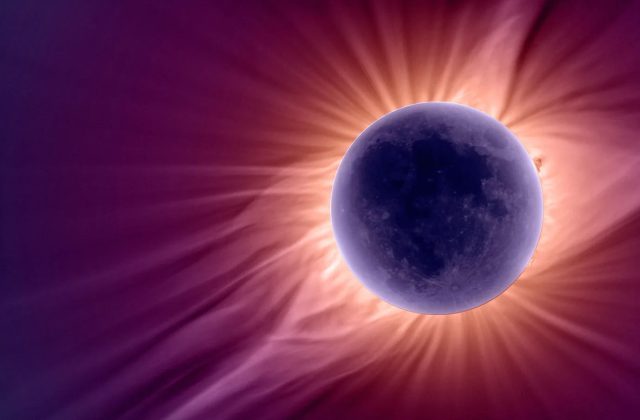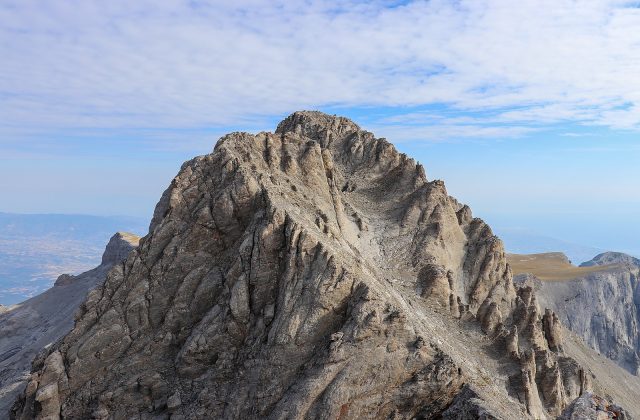North Texas will see partial solar eclipse on Monday
North Texas will experience about 80 percent coverage on Aug. 21, during the first total solar eclipse in the U.S. mainland since 1979. Image courtesy of TimeandDate.com.
by Amy Martin
Aug. 15, 2017
Total solar eclipses are not rare. Most calendar years have two solar eclipses, according to TimeandDate.com. But the one happening on Monday is the first visible in the United States in nearly 40 years.
If the orbits of the Earth, Moon, and Sun were perfectly circular and on the same level galactic plane, they’d happen at the peak of every New Moon phase. That’s when the Moon, as it orbits around the Earth, slides directly between the Sun and us. It is conjunct with the Sun, as close to it as it can be, fused as one.
The Great American Eclipse, as it’s being called, peaks in the Central Daylight Time at 1:09 p.m. on Monday, Aug. 21. The entire process — the Moon slipping in front of the solar disk, covering it and exiting — takes about two hours, in this case from 11:40 a.m. to 2:39 p.m.
But every year and a half or so, the orbits of these three celestial bodies line-up just right. The Moon passes in front of the Sun so precisely that the lunar face fits perfectly in front of the solar disc. The Moon’s tiny face, just a few thousand miles across, covers exactly that of the Sun, nearly a million miles wide. And we on Earth fall into the shadow of the Moon as it races across the globe.
Annular solar eclipses, where a significant outer ring of the Sun is visible, and partial eclipses are far more frequent. Because it takes times to get all these intricacies in alignment, total solar eclipses are always preceded or followed by at least one lunar eclipse; that one happened on Aug. 7. This week is the fourth lunar quarter. The forgotten Moon rises well after midnight, a crescent melting practically unseen. Then, bam! mid-day on Monday, Aug. 21 – a total solar eclipse by a ninja New Moon.
METAPHOR IN THE SKY
 The New Moon phase is a time of trial by fire. The Moon with its back to the Sun appears to pass through the solar corona. For three days it can’t be seen in the sky. It subsumes. Yet it is reborn, the waxing Crescent Moon emerging from the solar glare in the western sunset sky. Total solar eclipses are the ultimate act of non-violent protest, the victory of cold over hot, passive over active, yin over yang.
The New Moon phase is a time of trial by fire. The Moon with its back to the Sun appears to pass through the solar corona. For three days it can’t be seen in the sky. It subsumes. Yet it is reborn, the waxing Crescent Moon emerging from the solar glare in the western sunset sky. Total solar eclipses are the ultimate act of non-violent protest, the victory of cold over hot, passive over active, yin over yang.
At the peak of a total solar eclipse, if you’re in the narrow path of totality – which averages only 100 miles wide – the Sun disappears. There is darkness where a star should be, a hole in the sky, a portal to parts unknown. Only the barest of solar corona peaks out. Stars and planets become visible to the naked eye; this time Venus and Jupiter will pop into view.
The sky show is spectacular, but the real drama is on the ground, in the literal path of totality. As the wide shadow approaches, the western horizon darkens like an ominous thunderstorm. Animals grow quiet; surroundings lose color. The light polarizes in gentle hues from silver grey to light blue. The umbral shadow of the Moon zooms across the Earth like a scream — from 1500 to 2410 miles per hour, depending on your location. A profound otherworldly twilight envelopes; a quicksilver stillness seeps into the Earth. And then darkness.
GREAT AMERICAN ECLIPSE
 The Great American Eclipse, as it’s being called, peaks in the Central Daylight Time at 1:09 p.m. on Monday, Aug. 21. The entire process — the Moon slipping in front of the solar disk, covering it and exiting — takes about two hours, in this case from 11:40 a.m. to 2:39 p.m. The width of the totality path for this one is less than usual, averaging around 70 miles wide. The length of the eclipse ranges from 2 to 2:40 minutes, with the maximum time occurring around Missouri. Here’s the process.
The Great American Eclipse, as it’s being called, peaks in the Central Daylight Time at 1:09 p.m. on Monday, Aug. 21. The entire process — the Moon slipping in front of the solar disk, covering it and exiting — takes about two hours, in this case from 11:40 a.m. to 2:39 p.m. The width of the totality path for this one is less than usual, averaging around 70 miles wide. The length of the eclipse ranges from 2 to 2:40 minutes, with the maximum time occurring around Missouri. Here’s the process.
A total solar eclipse has not been seen in the mainland of the United States since 1979. This one’s big for the U.S. because the entire path of totality falls almost completely inside its borders and in populated areas. Following the axial turn of the Earth, after starting in the Pacific Ocean, the path enters just below Portland, Oregon, exits around Charleston, South Carolina and ends in the mid-Atlantic Ocean. In the process, it bisects the country in a diagonal, passing over Lincoln, NE; Carbondale, IL (near St. Louis); Nashville, TN; and a number of smaller cities and towns.
It’s also big because it’s the first total solar eclipse in the U.S. during the social media era. Because of that, faulty information is rampant. Here are some trustworthy sites:
Watch a live stream of the total solar eclipse:
THE ECLIPSE IN DFW
North Texas will experience a partial eclipse of about 80 percent coverage. Without eclipse glasses, which allow you to look at the Sun without permanently burning your retina, it will be unnoticeable to most since plenty of sunlight still escapes. With eclipse glasses, the solar face will have a thick crescent of light remaining. Visit this site by Time magazine and see how it will appear in your area.
 To view it safely, follow these tips.
To view it safely, follow these tips.
Again, the show is not just in the sky, but in the light effects on Earth. In the hour as the eclipse ramps up, the light changes. It goes from straight line to curves. It stripples and shadows mimic the diminishing shape of the solar face. The atmosphere takes on the slightest of chills; the wind ebbs. Read this poetically detailed description to become aware enough to detect these changes.
According to NASA, the only safe way to look directly at the uneclipsed or partially eclipsed sun is through special-purpose solar filters, such as “eclipse glasses” or hand-held solar viewers. Homemade filters or ordinary sunglasses, even very dark ones, are not safe for looking at the sun. Courtesy of NASA.
Whether you are watching the total solar eclipse or not, it will immerse you. Go with the flow. Allow invisible blockages to dissolve. There are no barriers, no definitions, in the dark. All that we know is that we will not know everything. A total solar eclipse represents the place of the unconscious where mystery dwells. Even in this exquisite matrix of astronomical knowledge, only in letting go of knowledge will we find truth.
Nature in its infinite cycles offers us another chance to experience a total solar eclipse. On April 8, 2024, the path of totality cuts through northern Mexico and slices across the whole of Texas. DFW and the eastern half of North Texas are in the path! It takes a swooping diagonal to Maine, glances off the Canadian maritime provinces, and heads out to the north Atlantic Ocean — the Great North American Eclipse. Map of 2024 solar eclipse here.
OTHER RESOURCES
Downloadable Eclipse Kit from NASA
Original post at: https://www.greensourcedfw.org/articles/north-texas-will-experience-partial-solar-eclipse-monday
Stay up to date on everything green in North Texas, including the latest news and events! Sign up for the weekly Green Source DFW Newsletter! Follow us on Facebook, Twitter and Pinterest.





